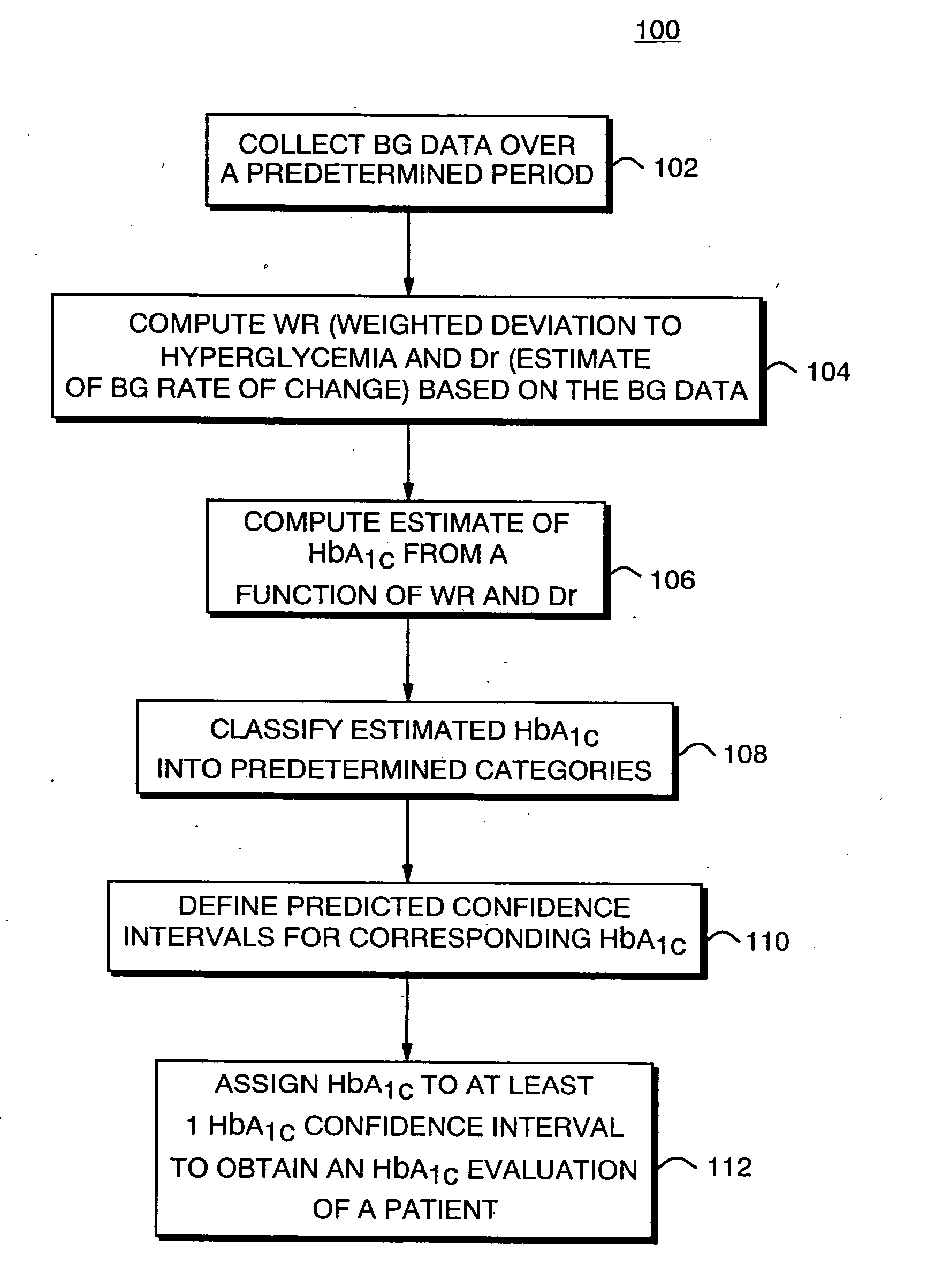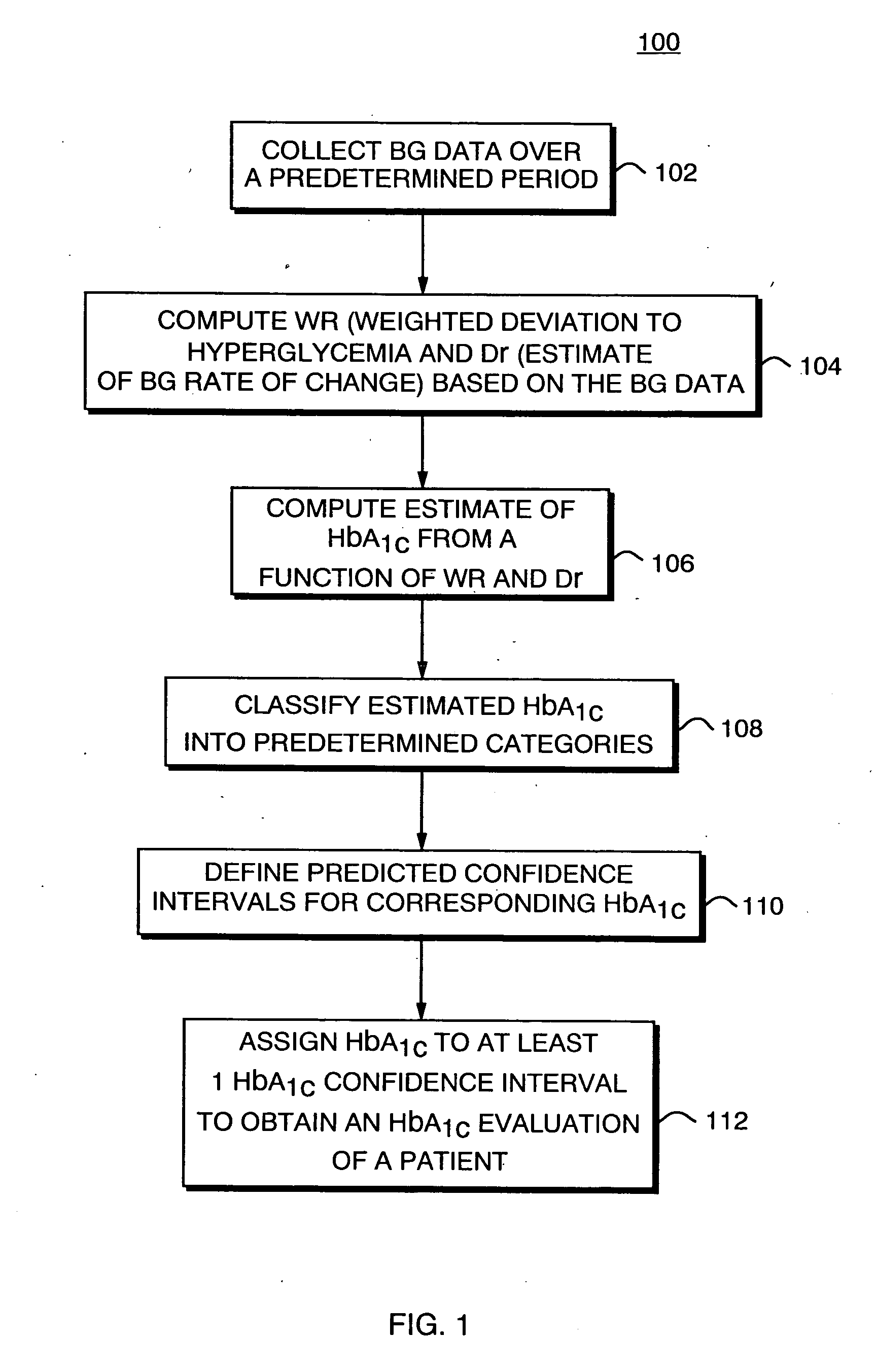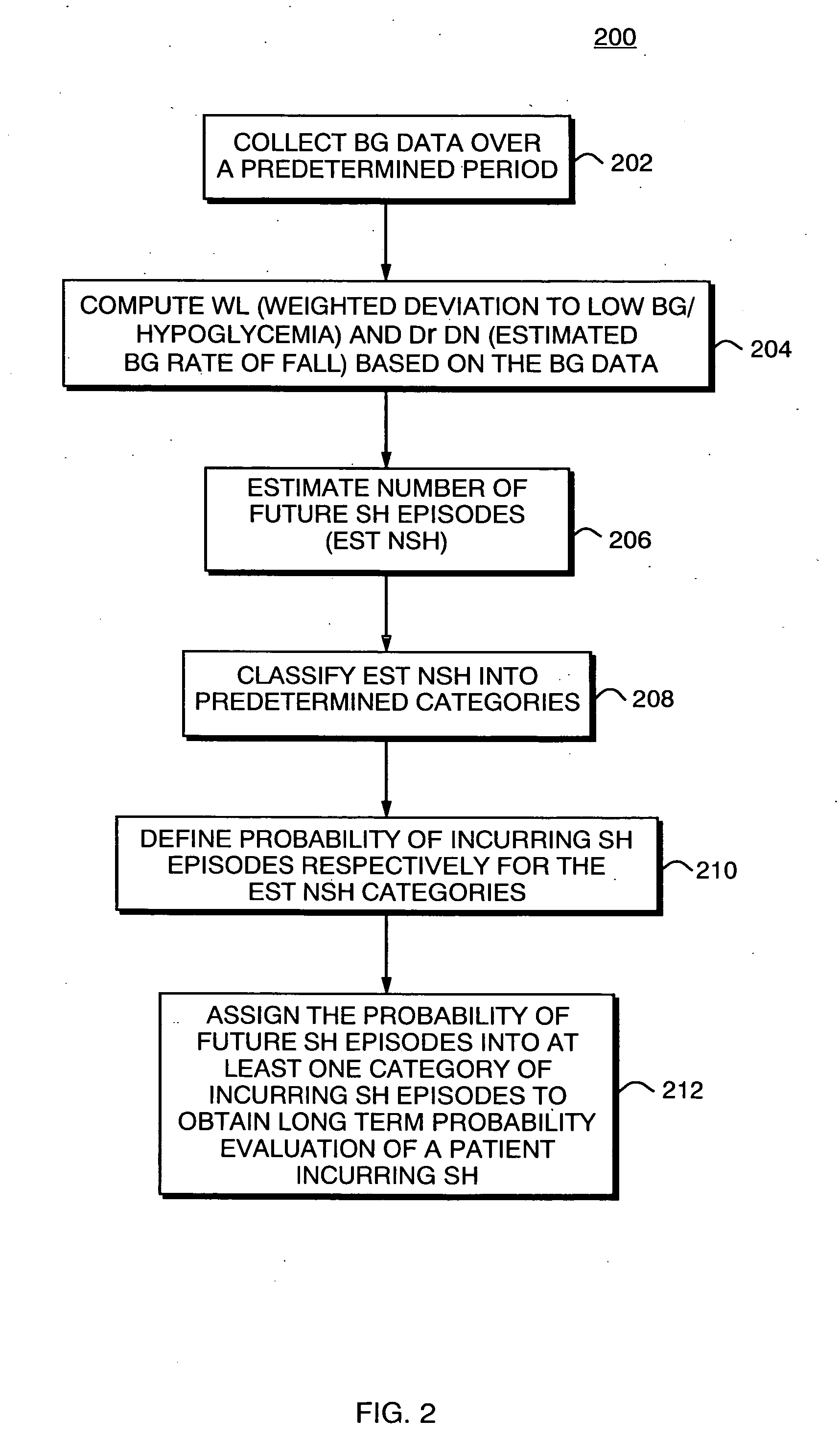Method, system, and computer program product for the evaluation of glycemic control in diabetes from self-monitoring data
a self-monitoring and diabetes technology, applied in the field of glycemic control of individuals with diabetes, can solve the problems of increasing the risk of frequent severe hypoglycemia (sh, patients and health care providers are discouraged from pursuing intensive therapy, patients with diabetes face a life-long optimization problem), and achieve the effect of improving the monitoring of the risk of hypoglycemia
- Summary
- Abstract
- Description
- Claims
- Application Information
AI Technical Summary
Benefits of technology
Problems solved by technology
Method used
Image
Examples
Embodiment Construction
[0036] The invention makes possible, but not limited thereto, the creation of precise methods for the evaluation of diabetics' glycemic control, and include, firmware and software code to be used in computing the key components of the method. The inventive methods for evaluating HbA1c, the long-term probability of SH, and the short-term risk of hypoglycemia, are also validated based on the extensive data collected, as will be discussed later in this document. Finally, the aspects of these methods can be combined in structured display or matrix.
Stationary Measures of BG Deviation
[0037] According to the inventors' theory of BG symmetrization (See Kovatchev B P, Straume M, Cox D J, Farhi L S. Risk Analysis of Blood Glucose Data: A Quantitative Approach to Optimizing the Control of Insulin Dependent Diabetes. J of Theoretical Medicine, 3:1-10, 2001) the natural clinical center of the BG measurement scale is at BG level of 112.5 mg / dl (6.25 mmol / l)—a safe euglycemic value for a diabete...
PUM
| Property | Measurement | Unit |
|---|---|---|
| Concentration | aaaaa | aaaaa |
| β | aaaaa | aaaaa |
| γ | aaaaa | aaaaa |
Abstract
Description
Claims
Application Information
 Login to View More
Login to View More - R&D
- Intellectual Property
- Life Sciences
- Materials
- Tech Scout
- Unparalleled Data Quality
- Higher Quality Content
- 60% Fewer Hallucinations
Browse by: Latest US Patents, China's latest patents, Technical Efficacy Thesaurus, Application Domain, Technology Topic, Popular Technical Reports.
© 2025 PatSnap. All rights reserved.Legal|Privacy policy|Modern Slavery Act Transparency Statement|Sitemap|About US| Contact US: help@patsnap.com



